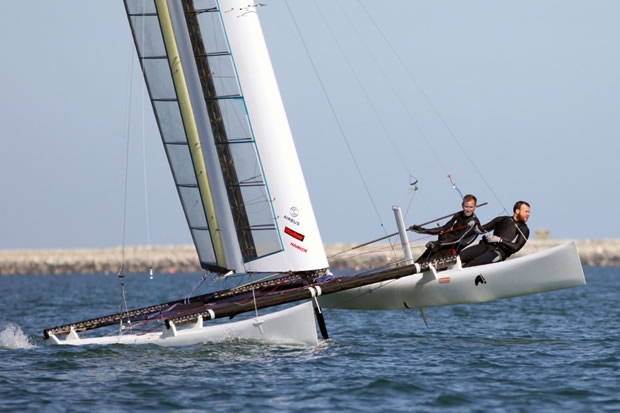
Team Invictus head for America
With BMW Oracle Racing still pondering whether or not the 34th America’s Cup should be held in monohulls (the popular choice with teams) or multihulls (the technically progressive choice), so an unpredicted amount of focus is set to be placed on the Little America’s Cup, taking place in Newport, Rhode Island over 22-28 August. For as it says on the tin, this is lining up to be a '33rd America’s Cup-lite' in the smaller 25ft long, 14ft wide C-Class catamarans, although unlike this spring’s event in Valencia there are to be six or seven boats. There is also the significant design parameter difference in that C-Class cats are limited to a maximum of 300sqft of sail area. This limit means firstly that they don’t use headsails or kites, but also that their solid wingsails are more complex than the towering wing we saw on the BMW Oracle Racing tri. In short they are the most efficient sailing machines on the water.
Perhaps it heralds multihulls’ coming of age, but there is another feature of this event, almost unimaginable 10 years ago: It is being hosted by the New York Yacht Club. This is like the Royal Yacht Squadron staging the next Moth World Championship.
The competition will essentially be between two large teams. One is American Steve Clark, winner with Cogito in 1996 against the Australian team in Yellow Pages The Edge III and successful defender again with Cogito on Narragansett Bay in 2004. The other is Canadian Fred Eaton, who mounted a successful challenge on Alpha in 2007.
The majority of the boats competing originate from these two teams – Eaton built two new boats for the 2007 event, his winning Alpha and the foiler Off yer Rocker and has two new ones for this year’s event – Orion and the newer Canann. Eaton and Magnus Clarke are set to race Canaan while their 2007 winner Alpha is to be campaigned by BMW Oracle Racing’s James Spithill and Glenn Ashby (who both came sailing on Eaton’s C-Class cats as preparation for the 33rd America’s Cup, while some of Eaton’s team subsequently worked at BMW Oracle Racing in Valencia, keeping the boat on the mooring when the wing was up, etc).
However only three of Eaton's C-Class armada may be sailing, following some major carnage that took place to Canaan’s wing over the weekend – Magnus Clarke’s must-read account of this is here.
In the Clark stable, based in upper Rhode Island, is the mighty Cogito, but Clark has also built a new boat, his first in 15 years, called Aethon, featuring some cool canting daggerboards. In addition there is the old dame, Patient Lady VI, now 25 years old and to be sailed by a French team, helmed by former Sopra Group ORMA 60 skipper, Antoine Koch.
In addition to this line-up is the British Team Invictus, led by Norman Wijker and his team at Airbus in Bristol with the added help of Vestas SailRocket’s Paul Larsen and Helena Darvelid.
Team Invictus had their last sail at the weekend, before the boat is packed up and shipped to Newport for the event. Ironically compared to the competition Team Invictus is looking in good shape. While Steve Clark has been out sailing on Aethon with Cogito's rig, he has yet to finish his new wingmast and is therefore presumably behind with its development. Meanwhile the Canadian team are still reeling from the weekend’s devastation that near destroyed the delicate solid wingsail when the boat capsized in a squall.
“It is funny – here sits Team Invictus...while Steve doesn’t have the new wing on his new boat and the Canadians are all in a mess, we are cruising along quite nicely!” Paul Larsen told thedailysail. “I feel quite envious reading about the Canadians in a way – normally it’s me talking about carbon crunching and destruction! They’re treading firmly on my turf!”
Over the course of this summer the routine for Team Invictus is to work on the boat and its wing during the week in Bristol, trail it down to the Weymouth & Portland Sailing Academy on a Friday night and sail it over the weekend, before the cycle starts again. The team have been blessed by great weather over the last few weeks and haven’t missed a sailing day.
“It has been constantly upgrading it to the point that when we are sailing it, there are still guys back in the shed making bits for it for the next weekend,” states Larsen. “It’s like garage Formula 1. The whole team has been really motivated by the progress and the on the water program and just seeing the boat looking and feeling like a proper C-Class. Also because the status of the event is going up [thanks to BMW Oracle Racing's involvement and the big America’s Cup community getting interested in it], that is making everyone quite excited.”
While Team Invictus' platform is the original from 2004, the boat features a new wing, similar in basic concept to Cogito’s (as in fact all the boats racing in Newport this year have – assuming the masterpiece Steve Clark is soon to unveil doesn’t depart from the norm). However over the summer the Bristol posse have been going through some major optimisation. “On the wing there are new lower element 3s and new element 2s and control horns and systems – it has constantly been improving,” says Larsen. “We are getting to the stage now where we can sail it in the whole spectrum of C-Class conditions up to 20 knots quite comfortably. We’ve had three sails where we’ve been out there throwing it around windward-leewards courses and we’ve been able to put it back with no breakage, and only improvements.”
So in theory if it comes to attrition then Team Invictus should be in reasonable-ish shape, but as Larsen says: “You are never out of the woods with these boats. Even on the weekend, we had one issue where the lower element 2 popped out of all the fingers, just because we let a line go upwind and the wing went to full camber. I have no doubt that there will be still races won by attrition.”
Another problem, as used to be the case with America’s Cups of old, is that Team Invictus head for the USA with little idea of how their boat will perform against the competition and, in particular, the new boats. While the British team has a new wingsail, the latest wings States-side are likely to be higher aspect ratio. If Cogito’s wingsail was around the 40ft mark, the British wing is a bit taller and the Canadian wings from 2007 taller again. Will the new Steve Clark wing go even further down this route?
Then there is the issue of weight. The Invictus boat is around 180kg all-up. Since 2004 they have shed a little weight from it, but Larsen says they have generally improved it all round. “The rudders for example, we might have saved 800g on the whole package, but they are much better, much more efficient rudders.” In comparison the new boats might be around 155-165kg, but Larsen points out that the crew on the American boats are likely to be heavier than he and Gordon Kaiser, who will be the crew on Team Invictus. “We will try and get ourselves down to fighting weight - Gordon has shed 6-8kg and I’ll drop 5-6kg by the time I get there.” However there are a lot of times on a C-Class cat when having a heavier crew to effectively more than double the all-up weight of the boat is useful as, simply, it equals power. Maybe Larsen should be eating pies rather than denying himself.
Many of the speeds questions will only become apparent when the boats pitch up at Newport’s Fort Adams for the build-up week prior to decamping to the immaculately hewn lawns of the New York Yacht Club for the week of the race proper.
“There is only so much we can really do,” admits Larsen of what happens if they find they are off the pace. “Certainly there is a lot we can still do with the general handling of the boat. Just sailing around tight windward-leeward courses on this Sunday you could still see that if you don’t get the boat set up right or quite often if you have overstepped or understepped the mark, being able to change the modes or bang in the quick gybe or go into sailing deep mode quickly and effortlessly is where you will make big gains. If you could sail our boat perfectly around the course I’m sure it would be quite good. If we sail as good as everyone we would have to expect we are going to be a little bit heavier and maybe could do a bit more optimisation on the overall package. But we don’t know that and aren’t going to assume that.”
One of the surprise visitors to the Team Invictus camp in Weymouth has been Australian Tim Daddo, a kind of competitor to Larsen in the speed sailing arena as he is one of the Macquarie Innovations pilots, but who was also on the Yellow Pages C-Class that lost the Little America’s Cup to Steve Clark in 1997.
“You learn to live with things that you have and then he [Daddo] gets on and straight away expects something else to be there,” says Larsen of Daddo’s feedback. “Like how you control the upper element 3 [the top of the aft-most of the wing’s three sections]. When they used to sail upwind, they could just sail it off the top of the wing and that isn’t in our current system. So it is a boat that you have to be willing to make big changes to quickly. If it isn’t working, don’t just sit there and go ‘well it looks so nice and shiny we did so much detail work on it, it doesn’t matter that it isn’t fast’. Get it out, chop it and change it. The team has responded to that approach and most of the things we’ve wanted to do in the time frame we have done or we have the basics that we can finish off during five or six days in Newport.”
Daddo also confirmed something they already knew that the Team Invictus rig was flopping about too much. Part of this is platform stiffness, particularly in the hulls which lack U-Ds and so have a slight tendency to go Hobie 16-style banana shape. However they hope to remove part of the problem by changing the rigging. At present they are using Marlow SK78 rope, but are looking to move to PBO.
“There is some PBO rigging out there which is made in a woven string so you can splice it yourself and put a heat shrink over it afterwards,” says Larsen. “So it is more user friendly, because you can splice it like Dyneema and Spectra. So we will have a go with that. It has to be something we can do quite for hundreds of pounds quickly otherwise we’ll just go to wire. We have to focus now on what we’re changing and spending money on, but that is a no brainer if we can get lightweight and stiffer rigging.”
Daddo also advised that their C-Classes they had a perhaps better way of sailing in stronger breeze. As Larsen explains: “We can twist our wing off at the top, so all the power is just in the lower section, but instead of twisting off a cambered shape at the top, they would flatten out the very top of the sail. Not only would that reduce the overturning forces, it would also reduce drag at the top of the sail – so a double bonus. We have made on the modifications on our rig and that will be installed over in Newport.”
As to the competition then one imagines that they should on paper have the edge. Steve Clark’s Aethon has boards with a slight curve to them and these can be canted by up to 90 degrees. It will be interesting to see how he uses these, but one suspects Clark will have a lot on his plate getting his new rig up to speed with just one month to go before the event kicks off. The beams are further forward, perhaps in a move to centralise weight and reduce pitching (something solid wingsails aren’t partial to). But in the C-Class community we wait with baited breath to see Clark's new wingsail, something he has been developingin his active ever since Cogito was launched. As Larsen puts it: “We are all keen to see what the chief wingnut comes up with. He is not shy of being creative with that, but he hasn’t given much away.”
As a general trend the new boats have lower volume hulls with less beam and freeboard and have gone for more wave piercing-style bows, as is the trend in the A-Class and F18s, although not as extreme.
“The whole lead up will be quite amazing, just a fun place to be,” says Larsen. “And it is great seeing the general interest in the class. Everyone is motivated to get involved. It is an exciting thing to be a part of, and when they announce someone with the calibre of James Spithill and Glenn Ashby being there, it amuses me no end that you could be coming into a starting box in a match race on a wingsail boat against James Spithill..."
If the 34th America’s Cup is to go multihull - and this seems to be 50-50 at present – then one wonders which teams pitch up in Newport for the event. “If they go to multihulls for the America’s Cup, it will be interesting to see how that affects the C-Class and what they do, but I would expect that they would play around with boats bigger than a C Class, to test rigs, boats you could load up and take a couple more people on and put headsails on, because I image headsails would be a big part of the program,” says Larsen.
Even if the America’s Cup does go a different way, there is such an up-swell of popularity, as well as maturity, in catamarans such as the A-Class and the F18 that it seems likely that the C-Class and the Little America’s Cup could be on the ascent.
“If it is a really popular event and the racing is really good and exciting - multihulls are slowly becoming cool and a bit more mainstream, where teams might take up the challenge and go and do it," says Larsen. "For some people that’s just how they go yachting – they want to buy the latest and greatest off the shelf and get the best guys to go and sail them, then the class would lose something there, but you can’t stop progress. So it could be changing times for the class. The class definitely needs to ramp it up a bit. There have been quite a few dud regattas to be fair.” He reckons there could be as many as 10-12 teams in the event after this.
But with six/seven boats and some serious yachting calibre on board the boats, this looks set to be the most competitive Little America’s Cup yet.
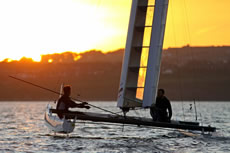 |
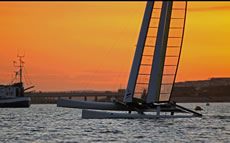 |
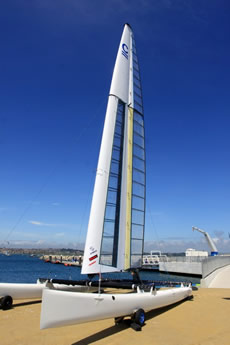 |
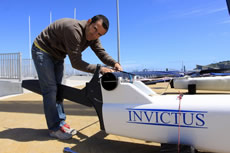 |
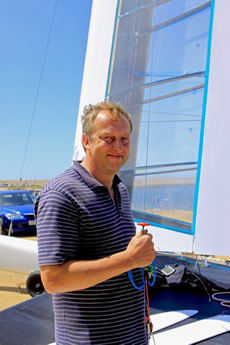 |
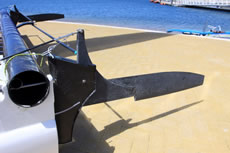 |
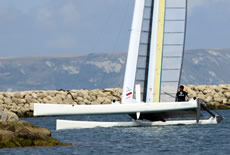 |
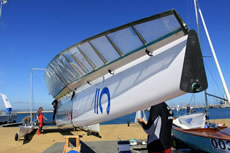 |
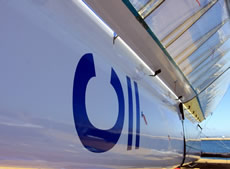 |
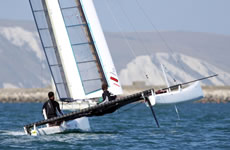 |
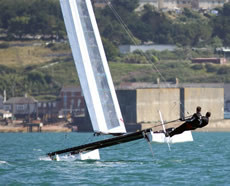 |
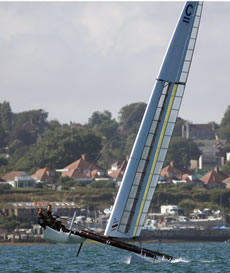 |
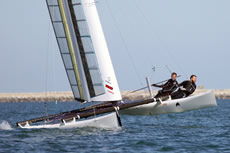 |
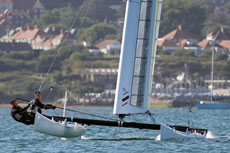 |
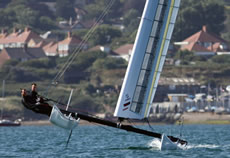 |









Latest Comments
Add a comment - Members log in